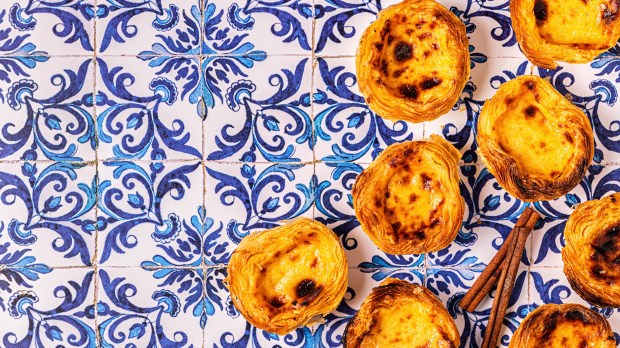Monks are crafty. They brew beer, distill liquors, build astonishing abbeys, revolutionize art and science, and even invent perfumes. They also happen to make great sweet treats, like the iconic Portuguese tart, the pastéis de Belem –Bethlehem’s tarts, also known as pastéis de nata. The story behind the invention of this custard-filled tart is intertwined with the rich history of the Mosteiro dos Jerónimos, the Hieronymite Monastery in Lisbon, in the Belém neighborhood – hence the name of the pastry.
The year was 1837, a time when Portugal (like most of Europe) was experiencing a period of political and religious turmoil, including the closure of many monasteries and convents. The monks residing in the Jerónimos Monastery faced significant challenges, with their means of financial support dwindling, leaving them in a precarious situation. It was then when they resorted to their culinary expertise.
Drawing upon traditional monastic techniques and recipes passed down through generations of monks, they created a new delicacy — the pastel de nata. These custard tarts, with their flaky pastry crusts and creamy fillings, were an instant hit among locals and visitors alike.
The secret recipe of the pastel de nataremained closely guarded within the monastery walls for many years. However, the monks soon realized that their recipe had the potential to reach a wider audience. With this in mind, they established the famous Pastéis de Belém bakery, which still exists to this day.

The bakery became the custodian of the monks’ recipe, ensuring its preservation and perpetuation. The success of the bakery, along with the rising popularity of the pastel de nata, turned this humble dessert into a national treasure, a symbol of Portuguese cuisine, and an edible, tasty testament to the ingenuity and resilience of the monks from the Jerónimos Monastery. So, the next time you savor a pastel de nata, remember the monks whose delightful invention tells a story of endurance, innovation, and the pursuit of preserving tradition.



